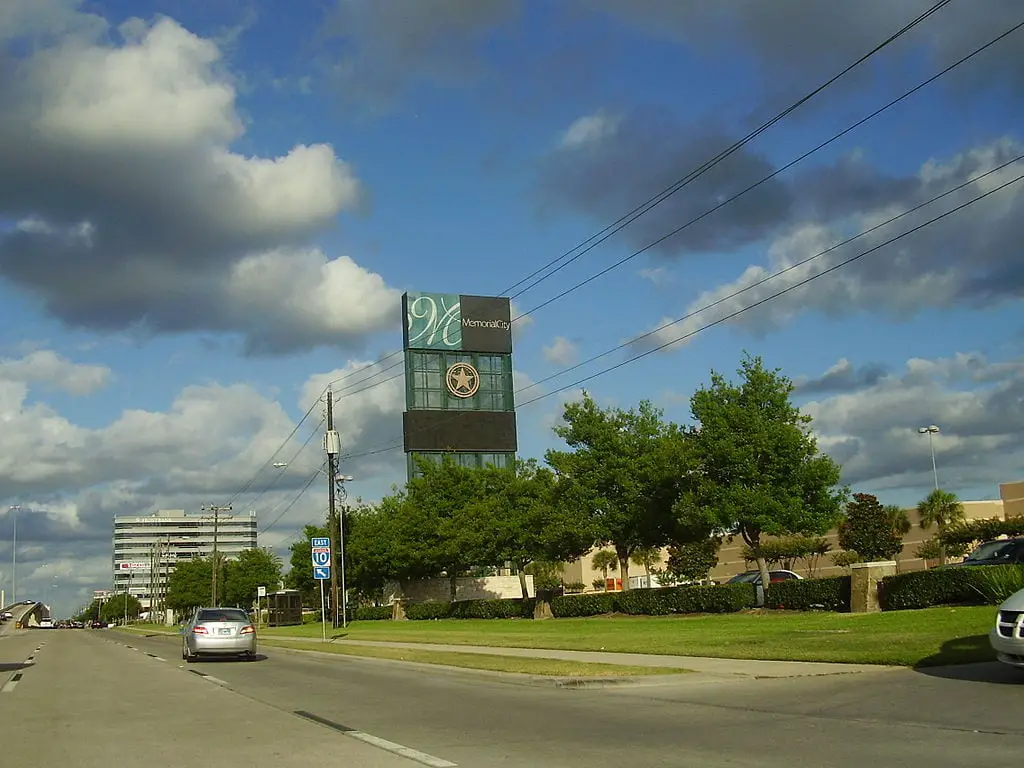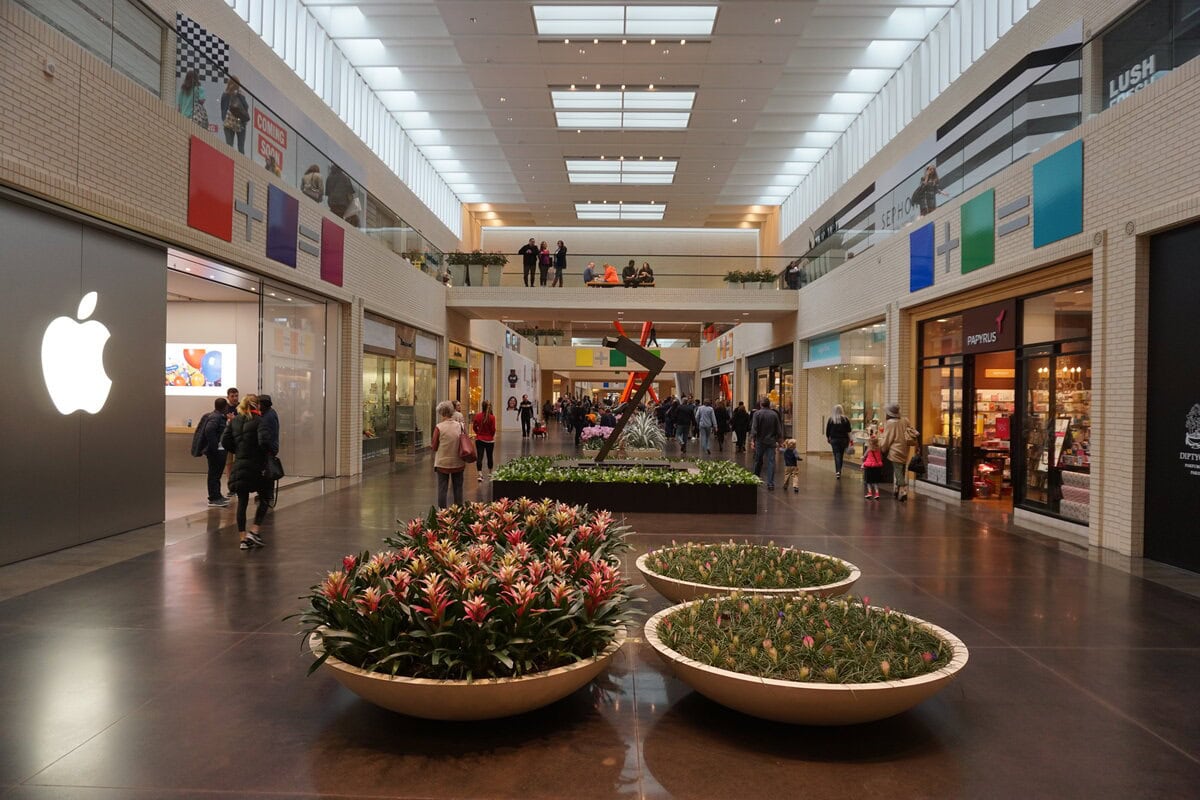Introduction to Memorial City Mall
Memorial City Mall stands as one of Houston's most dynamic shopping centers, located just 11 miles west of downtown Houston. Situated at the busy intersection of Interstate 10 and Gessner Road, this mall has been a go-to destination for Houstonians since its opening.
Developed by MetroNational, a real estate company founded by Joseph J. Johnson, the mall has grown significantly over the years and has become a key part of the Memorial City Management District.
Spanning a large area and boasting over 120 retail stores, Memorial City Mall is known for housing some of the country's most recognizable department stores, such as Macy's, Dillard's, JCPenney, and Target.
In addition to its anchor stores, the mall offers a variety of things to do in Houston, Texas, with entertainment options that go beyond shopping. It features a Cinemark theater, a popular spot for moviegoers, and an NHL-sized ice rink, perfect for family outings.
A notable feature of Memorial City Mall is its accessibility. Several METRO routes, operated by the Metropolitan Transit Authority of Harris County, serve the mall, making it a convenient stop for both residents and visitors.
The nearby Memorial Hermann Memorial City Medical Center further enhances the area's appeal, as the mall has become a natural extension of the bustling commercial and healthcare hub.
The Early Years (1960s-1980s)
Memorial City Mall opened its doors in 1966, entering Houston's retail landscape at a time when suburban shopping centers were becoming popular.
MetroNational developed the mall with Sears as its first anchor store, a common fixture in malls during that era. Alongside Sears, Weingarten's, a regional grocery store chain, also set up shop.
Just a few years later, Montgomery Ward joined as another anchor, expanding the mall's offerings to cater to middle-class families moving into Houston's west side.
In 1974, Foley's opened in the newly developed east wing of the mall, marking a big step in the mall's growth. A beloved Texas department store, Foley's drew in shoppers with its vast selection of fashion and home goods.
Lord & Taylor, known for its upscale offerings, joined the mall in 1977, adding a luxury option to the mix. With these additions, the mall grew to over 1.3 million square feet of retail space, establishing itself as a prominent shopping destination in West Houston.
However, the competition wasn't far behind. In 1983, Town & Country Mall opened just a mile away, and with stores like Neiman Marcus and Marshall Field, it attracted a wealthier, fashion-conscious clientele.

The Rivalry with Town & Country Mall and Initial Struggles (1980s-1990s)
Town & Country Mall boasted high-end retailers and was seen as the more stylish choice, drawing shoppers who were looking for upscale brands.
To compete, Memorial City Mall embarked on a series of changes aimed at drawing in a broader audience, including the addition of Fame City in 1989.
Fame City was an ambitious entertainment complex that featured a wide range of activities: an indoor mini-golf course, a video arcade, a roller skating rink, and even a teen disco.
The mall also added an eight-screen Loew's Theater, offering visitors more reasons to stay beyond just shopping.
To attract niche crowds, it began hosting specialty conventions, like model train shows. Despite these efforts, Fame City didn't succeed in the long run, and the mall continued to face challenges.
By the late 1980s, the oil glut had impacted Houston's economy and, with it, the retail landscape. Memorial City Mall saw its customer base shrink.
Lord & Taylor closed its doors in 1989, and its space was replaced by Mervyn's, a more budget-friendly retailer.
Meanwhile, Town & Country Mall began to struggle as well, especially with the construction of the Sam Houston Tollway, which made accessing Town & Country more difficult.
Over time, key tenants like Dillard's and JCPenney left Town & Country Mall to set up shop at Memorial City, which eventually led to its closure in 2004.
Revival and Expansion (2000s-2010s)
By the early 2000s, Memorial City Mall faced a pivotal moment. The area around the mall had bounced back economically, and MetroNational seized the opportunity to revitalize the mall with a $500 million renovation.
This extensive project, which ran from 2001 to 2005, transformed Memorial City Mall into a modern shopping destination, adding over 100 new retail stores and several anchor tenants.
In January 2001, Montgomery Ward closed its doors, and that same year, Foley's moved into a larger, two-level space within the mall. The original Foley's building was later demolished to make way for a brand-new Dillard's in 2003.
Around this time, MetroNational also added two large parking garages to accommodate the growing number of visitors.

A major highlight of the renovation was the addition of a large children's play area and an NHL-sized ice rink, further positioning the mall as a family-friendly destination.
In May 2007, a new 16-screen Cinemark theater opened next to the old Sears store, adding a state-of-the-art entertainment option for visitors.
The revival wasn't just about adding retail space - it was about creating a complete shopping experience, with dining and entertainment built into the mix.
The mall also bridged its gap with Memorial Hermann Medical Center by constructing a skyway across Gessner Road, which linked the mall to the newly built Westin Memorial City Hotel, which opened in 2011.
The 2000s brought another major change: Lord & Taylor briefly returned to the mall in 2002, but by 2005, it had closed again. JCPenney took over the space in 2006, following the closure of Mervyn's after the chain exited Texas.
Present and Future Outlook (2020s)
In 2018, Sears, one of the mall's original anchors, closed its doors as part of the company's nationwide restructuring.
However, this closure opened the door for new opportunities. MetroNational announced a major project to redevelop the site into Memorial Town Square, a 27-acre mixed-use development that will include retail stores, restaurants, and office spaces.
Scheduled to open in phases, with the first phase set for completion in 2025, Memorial Town Square will feature ten standalone retail buildings surrounding a half-acre green space. This new development marks a shift toward open-air, walkable shopping environments that combine commerce with community.
The redevelopment aligns with a broader trend in the retail industry: shoppers seek more than just stores - they want experiences.
By incorporating wellness spaces, local boutiques, and curated dining options, MetroNational aims to create an inviting environment where visitors can gather, shop, and relax.
As the retail landscape shifts, Memorial City Mall has demonstrated its ability to adapt and remain relevant.
Whether through large-scale renovations or new developments like Memorial Town Square, the mall continues to be a major player in Houston's commercial scene, offering a diverse range of shopping, dining, and entertainment options.









